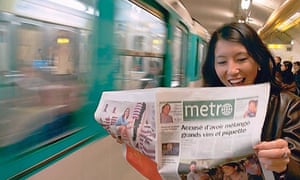Margaret Thatcher as soon as declared that “a person who, Travel Knowledge past the age of 26, reveals himself on a bus can rely on himself a failure”. Taras Grescoe is proud to be – in Thatcher’s estimation, at least –…
Margaret Thatcher as soon as declared that “a person who, Travel Knowledge past the age of 26, reveals himself on a bus can rely on himself a failure”. Taras Grescoe is proud to be – in Thatcher’s estimation, at least – a failure. Although he can drive, the Canadian author, who is in his mid-40s, has never owned an automobile. And he is not on my own. Half the populace of towns, including the big apple, Toronto, and London, do not own cars. Each day a few a hundred and fifty-five million people take the underground. And even though being a straphanger in North the usa maybe, as Grescoe indicates, a “miserable enjoy” because of underfunding and bad making plans, elsewhere public transport – especially in cities – is enjoying a renaissance. The heyday of the auto has surpassed.

On this passionately argued and crucial e-book, Grescoe takes the reader on a whistle-forestall excursion of world cities and their transport structures. He accuses the personal car of destroying cities, turning streets into kill-zones for the susceptible, polluting the air, and burning up an increasing number of scarce fossil fuels. Even though the scope of Straphanger is global, it without a doubt goals car-loving, gasoline-guzzling North the USA, and the facts he cites are absolutely shocking. Within the US – “the most extravagantly motorized state in the history of the sector” – vehicles now outnumber drivers through 5 to 4. Los Angeles, once hailed as an “autopia,” is now the most congested town within the US with drivers wasting seventy-two hours a yr stuck in visitors jams – Americans now spend nine years in their lives sitting in their automobiles, and the pollution they produce kills 30,000 US citizens every year.
But the alternate is inside the air. In 2009, the total number of automobiles within the US shrank. In its early days in the workplace, the Obama administration conjured up visions of a brand new golden age of public transport, presenting investment for formidable rail and subway schemes. Streetcars, which was the main mode of public transport in American cities, are being reintroduced in such unlikely locations as Houston and Denver. In 2010, public transport use reached a fifty four-year excessive. In this suburban nation, people are also shifting returned into the cities. These days launched figures from the 2011 US census show that many of the most important cities are now developing quicker than their suburbs; the primary time this has happened in a century. This trend is being led via younger individuals, many of whom also decide not to learn to force but are instead counting on bicycles and public transport. Even the big apple’s billionaire mayor, Michael Bloomberg, is now called the “straphanger mayor,” riding the subway multiple instances per week. Although, as Grescoe notes, he is taken to the subway forestall via a chauffeured SUV.
Fairly for an e-book about public transport, London isn’t one of the towns Grescoe visits. Certainly, the city is most effective mentioned for its “criminally steeply-priced” tube tickets, the failed experiment of privatization in 2003, and the dearth of aircon (“cruel and uncommon punishment”). Today greater than a thousand million passenger journeys a yr are made on the London Underground, a figure equaled with the aid of the subway gadget of recent York and the Paris Métro. Even though Shanghai did not open its first line until 1995, its hastily increasing metro has now come to be the longest subway community inside the global and Moscow’s underground is one of the busiest, carrying nine million human beings an afternoon, a parent matched best by way of Tokyo Reality Crazy.
RELATED ARTICLES :
- Twitter, WhatsApp, Facebook, and others social media platforms banned by J&K govt
- The Automobile Club of Egypt by Alaa al-Aswany review – a country on the brink of violent change
- Chrysler Automobiles for Work on Future Urban Car Safety
- ‘Accidental hero’ halts ransomware attack and warns: this is not over.
- Here are the gadgets from 2017 that our system
Grescoe stops off at most of these towns. In Paris, Blaise Pascal invented modern urban public transport in 1662 with the “crosses à cinq sols,” carriages that ran alongside 5 fixed routes inside the city, although sadly only for the gentry. today the Métro “is the maximum creative and efficient transit community ever built.” Parisian subway trains have been using autopilot technology because of the Nineteen Seventies, but now absolutely computerized trains are being brought. Grescoe is inspired with the aid of Shanghai’s subway. Above the floor, the people have swapped bikes for motors, as they embody a consumerist lifestyle. The result is congestion and pollution: the air inside the town’s streets has a fitness hazard. Moscow’s roads are also choked: it’s far “traffic hell.” however, its palatial Metro, built in the 30s, is “designed to ennoble and uplift the long-suffering straphangers of the sector.” within the Russian capital, it’s the most effective manner to journey. In Tokyo, he visits Shinjuku, with a few three.5 million commuters passing thru each day. The busiest station within the US is big apple’s Penn Station, which handles a paltry 600,000 commuters. Grescoe is right to surprise on the “awesome clockwork” of Tokyo’s transport system: it’s miles “the sector’s excellent instance of a transit city … a town built, and now stored walking, through its trains”.
Enrique Peñalosa, former mayor of the Colombian capital Bogotá, which revolutionized its public transport with a bus fast transit scheme, makes an effective point to Grescoe: “I believe a city is greater civilized now not when it has highways however whilst a toddler on a tricycle can circulate about anywhere without difficulty and protection.” In too many locations, multi-lane highways have sliced via the cityscape, destroying communities and developing barriers between districts. But the act of driving also basically modifications the way human beings use the city. In Interior vehicles, people are insulated from the city’s sights and sounds and isolated from other residents. With the aid of comparison, public transport is democratic, and a social enjoy. In Tokyo, a person tells Grescoe: “to use public transport is to recognize how to cooperate with different people, a way to behave in a public space.”
true public transport is crucial to the achievement of any global town. Grescoe argues that North America has fallen far behind Asia in its public transport infrastructure, and it “could be paying the fee, in phrases of lost competitivity, for many years to come back.” that is a caution for every city. but even in North America, a quiet revolution is taking location within the way people journey. And that is happening in towns everywhere, as humans from Philadelphia (the town with the very best percent of usa citizens who commute on foot) to Copenhagen (“the arena’s maximum bikeable city”) recognize that the automobile is now not an indispensable part of city life inside the twenty-first century.
Popular
-

-

What life is like after police ransack your house and take ‘every belonging’ — then the charges are dropped
A self-described Michigan “soccer mom” who had “every belonging” taken…
1839 0 -

5 Important Traits That a Good Mortgage Broker Must Have
A mortgage broker is a middleman between potential lenders and…
996 0 -

-

Smoothies and fruit juices are a new risk to health, US scientists warn
Fruit juices and smoothies represent a new chance Great News…
2503 0
Latest News
Many sports activities beverages out an extended list of nutrients and electrolytes on their labels, which makers declare will help…





















